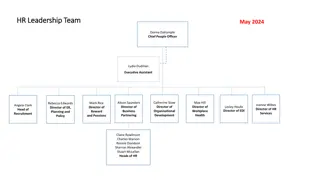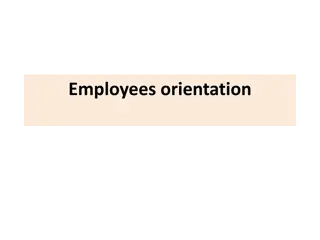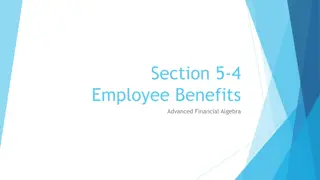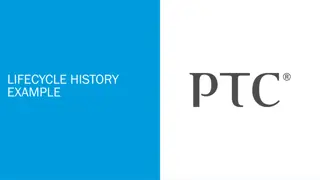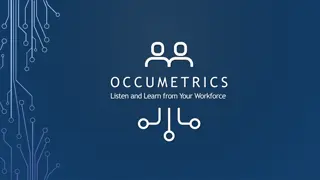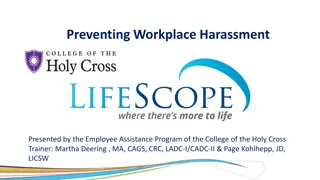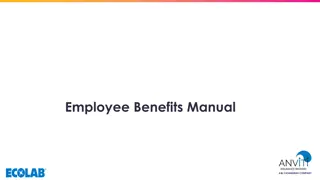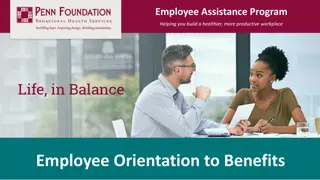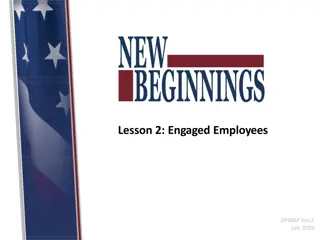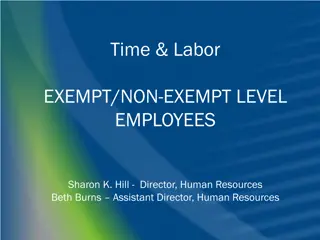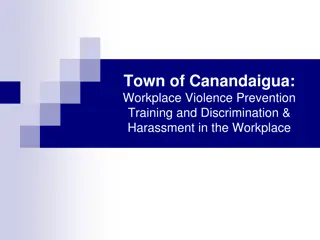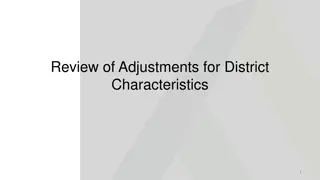Workplace Adjustments and Employee Lifecycle Overview
This content discusses the key stages in the employee lifecycle where workplace adjustments may be necessary to support employees effectively. It emphasizes the importance of providing reasonable adjustments as required under the Equality Act 2010, especially during recruitment, induction, performance, and probation stages. Workplace adjustments are provided to address workplace barriers for all employees, regardless of disability status. The content also highlights the need to capture workplace adjustment needs when employees move to different departments or organizations.
Download Presentation

Please find below an Image/Link to download the presentation.
The content on the website is provided AS IS for your information and personal use only. It may not be sold, licensed, or shared on other websites without obtaining consent from the author. Download presentation by click this link. If you encounter any issues during the download, it is possible that the publisher has removed the file from their server.
E N D
Presentation Transcript
CS Workplace Adjustments and the Employee Lifecycle September 2023
Employee Lifecycle: recruitment Key Stages: These are the key stages of an Employee Lifecycle. Amber and green indicate areas where workplace adjustments might be required. They would only be a consideration at the exit stage if an employee was moving to an OGD, and needed to arrange the transfer of adjustments. This should be captured on the CSET transfer form. Attraction Exit Recruitment Onboarding Retention Performance Development
The next slide highlights the key stages in the Employee Lifecycle where Workplace Adjustments might be needed to support an employee to perform effectively and thrive at work. The information below should be used in conjunction with the diagram. After the induction and probation stages, the employee could move backwards or forwards between the other stages multiple times, or miss out some completely. In the Recruitment stage, the CS external by default advertising process means the recruiter s focus may be on the provision of reasonable adjustments to employees and potential employees. This is a legal requirement on employers under the Equality Act 2010. In the Civil Service as an inclusive employer we provide workplace adjustments to anyone who faces a workplace barrier, regardless of whether or not they have a disability covered under the Equality Act 2010. Any employee exiting to an OGD should have their workplace adjustments needs captured on the CSET transfer form. Workplace adjustments might be recommended by OH as part of a capability assessment before partial or ill-health retirement is considered for an employee.
Employee Lifecycle: CS Workplace Adjustments Recruitment Induction Attendance Performance Probation Key stages: Employees might move in any direction around the cycles Training, shadowing, coaching, mentoring, development programmes. Exit: to OGD Change of circumstances: accident, injury, progressive & fluctuating conditions, sudden onset or new health problems. Change to working hours / Work pattern / Location / environment. Career progression: promotion Career progression: lateral move Career progression: new department





